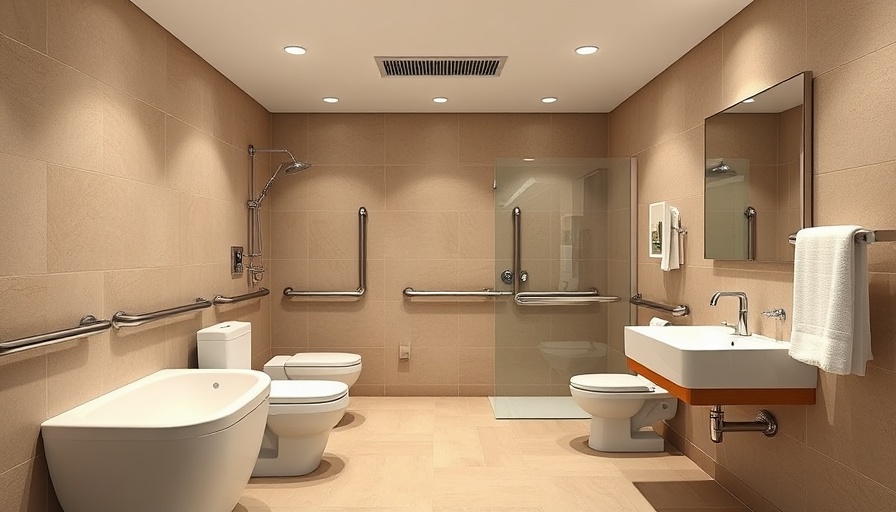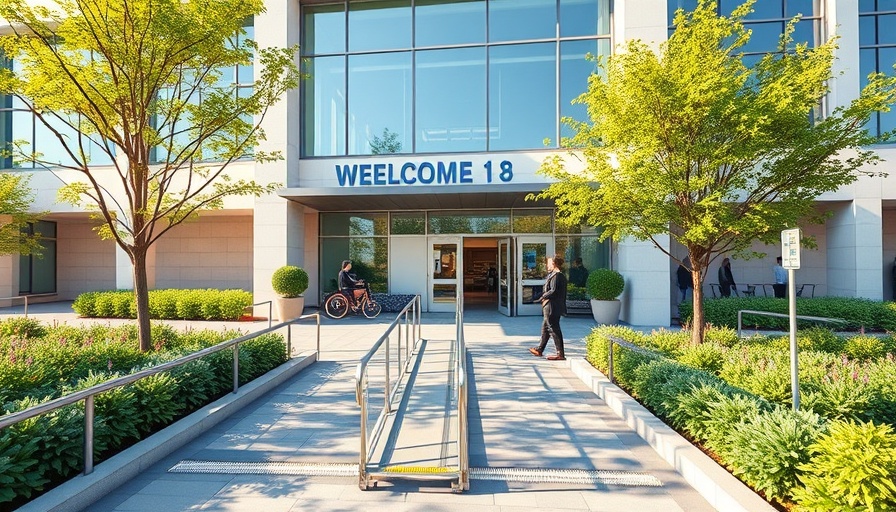
The Importance of ADA Compliance in Home Renovations
The Americans with Disabilities Act (ADA) not only sets forth vital standards for public spaces but also heavily influences private residences. For homeowners, especially those aged 55 and older, understanding how these regulations impact home renovations is essential. It's about accessibility, sure, but it's also about creating a welcoming environment for family and friends, regardless of their physical ability.
Breaking Down ADA Standards
The ADA Standards for Accessible Design provide concise guidelines on accessibility. While not every renovation needs to comply fully with ADA standards, understanding when and how these are applicable can save time and resources. As you assess your space, consider whether it meets the basic accessibility criteria that would make life easier for everyone.
Common Renovation Features that Enhance Accessibility
When planning your renovation, certain accessibility features can greatly enhance your home’s usability. Ramps are a must if there are any steps leading to your entryway, making it easier for all guests to enter. Additionally, consider making doorways and hallways wider, accommodating wheelchairs and strollers alike.
Grab bars in bathrooms are another critical feature that not only assists those requiring additional support but also provides safety for all family members. Lever-style handles on doors and faucets are also beneficial as they don’t require the same strength as traditional knobs. Plus, these features can be designed to blend into your home's overall aesthetic, proving that style and accessibility can coexist.
Professional Guidance: A Key to Successful Renovations
As exciting as it is to plan out the perfect accessible home, navigating the complexities of ADA regulations can feel overwhelming. This is where professional advice comes in. Hiring a contractor who specializes in accessible design ensure that the ADA standards are effectively implemented during your renovation process.
An experienced contractor not only understands all the necessary compliance nuances but can also help create innovative designs that enhance your living space. Moreover, they can assist with permits and inspections, easing your concerns about legalities and costs. Mistakes in planning can lead to costly delays, but with a professional by your side, you can remain focused on creating your dream space.
Understanding Local Regulations and Additional Considerations
In New Jersey, it’s vital to be aware of local regulations that may supplement ADA compliance. Municipal codes can vary, adding another layer of complexity to your renovation projects. Checking local laws ensures you not only meet federal guidelines but also adhere to state and community standards.
Running into regulatory issues mid-renovation can lead to unnecessary stress. Thus, consulting with local authorities or a knowledgeable contractor was advised upfront. A proactive approach may prevent a handful of headaches down the line.
Incorporating Accessibility Thoughts into Your Home Design
As discussions surrounding inclusivity flourish, the significance of accessibility in home renovations cannot be understated. This empowers homeowners to create living spaces that reflect a standard of comfort and care for all. Whether you're planning extensive renovations or making simple updates, a continued commitment to understanding and implementing the insights provided by ADA standards paves the way for a more accommodating home.
Approaching your renovation with an open mind can transform how your living space serves your family and community. Remember, accessibility isn’t a barrier — it’s a bridge toward connection.
Taking Action for a Better Home
So, if you’re considering a home renovation in New Jersey, think ahead! Dive into the resources available, consult professionals, and keep ADA standards in mind to ensure your space is not just beautiful but welcoming. Make the move today toward creating a home that stands as a testament to inclusivity.
 Add Row
Add Row  Add
Add 




Write A Comment